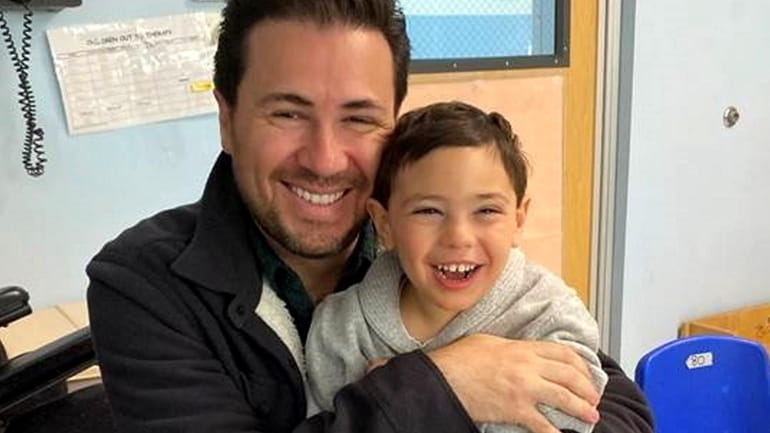My son has a rare disease; we can band together to support research on treatments

The author, Scott D. Reich, with his son Eli. Credit: Ilissa Reich
Until a few years ago, I knew very little about rare diseases. That changed in 2019 when my five-month-old son, Eli, was diagnosed with FOXG1 syndrome, an ultrarare disease that makes him unable to walk, talk, or do anything independently.
Along this torturous journey, I’ve been surprised to learn how “common” rare diseases are in aggregate — and how much opportunity exists to address them.
There are more than 10,000 rare diseases, which the National Institutes of Health defines as a disease afflicting fewer than 200,000 people in the U.S. Some 30 to 40 million Americans suffer from rare diseases, 95% of which have no treatment options.
It doesn’t have to be this way.
Recent advances in science and technology have enabled us to literally and figuratively leap into the future, converting sci-fi dreams to reality. Greater access to improved genetic tests has enabled earlier diagnoses. Innovative machine-learning platforms facilitate more effective aggregation of patient data. And new tools like CRISPR have revolutionized our ability to edit genes.
But we’re not quite “there” yet.
We’re still struggling with how to safely deliver these novel treatments. The cost of making new therapeutics remains high, so rare diseases are unattractive for biopharma to pursue, leaving the burden of drug development on impacted families.
But opportunities do exist to improve lives and narrow the gaps we must address as a society.
NIH should shorten review periods to assess novel research proposals and accelerate its decision-making process to award funding. Lengthy processes deter innovation.
To propel more collaboration among scientists working on the same disease, we should link NIH funding those scientists receive to the collaborations we seek. In academia, funding is often tied to peer-reviewed publications of one’s work. This deepens research silos instead of fostering partnership. Stand Up To Cancer’s model of crushing preexisting research silos — by prioritizing the funding of collaborative, cross-institutional research teams — is a model.
We similarly need to reward scientists and patient organizations for sharing information about unsuccessful experiments to increase efficiency. Most experiments don’t achieve the desired aims. Because research is performed in silos, scientists in the same field replicate fruitless work without knowing it, wasting time and money. NIH can centralize access to information and reward scientists who participate.
We must create more financial incentives to attract more investment in the rare disease space. The Food and Drug Administration Safety and Innovation Act of 2012 created a novel voucher program to reward companies for pursuing rare disease research. It’s due to sunset partly in September and fully in 2026. It must be renewed.
We need to help impacted families more quickly organize scientific efforts and accelerate new research in centralized hubs. There is no main place to “go” when one gets a life-changing diagnosis. We need a respected nonprofit destination for rare disease families upon diagnosis. There is power in numbers.
We must build a rare-disease community and direct our efforts toward the common good. No one who gets a rare disease diagnosis is asked who they voted for in the last election, where they pray, whom they love, or any other dividing factor. This is a field that ought to unite us in our shared sense of humanity, to help innocent kids who deserve a shot at life. Let’s get going.
This guest essay reflects the views of Scott D. Reich, a Port Washington father who cofounded the nonprofit Believe in a Cure, which works to develop a treatment for the rare disease that afflicts his son.
